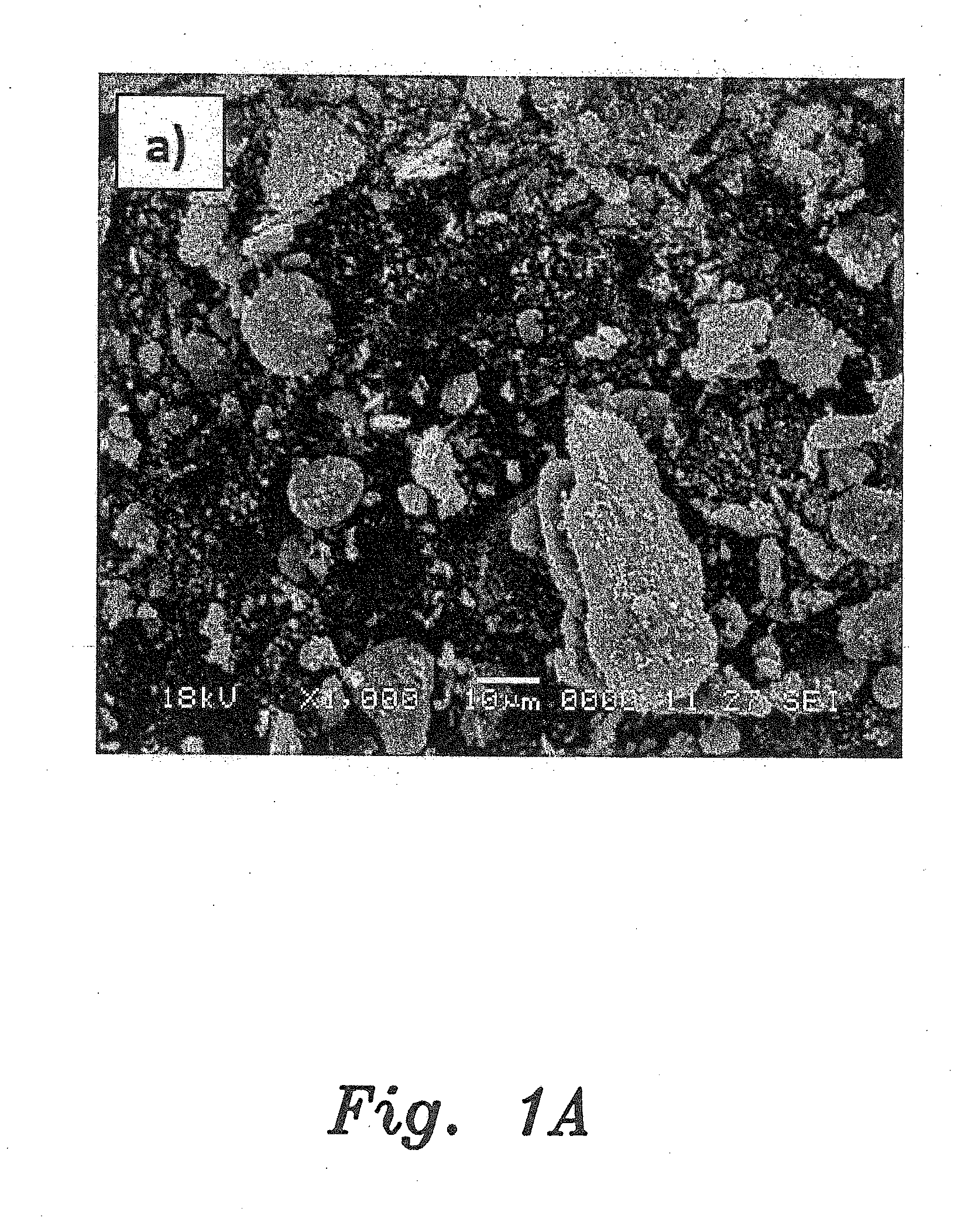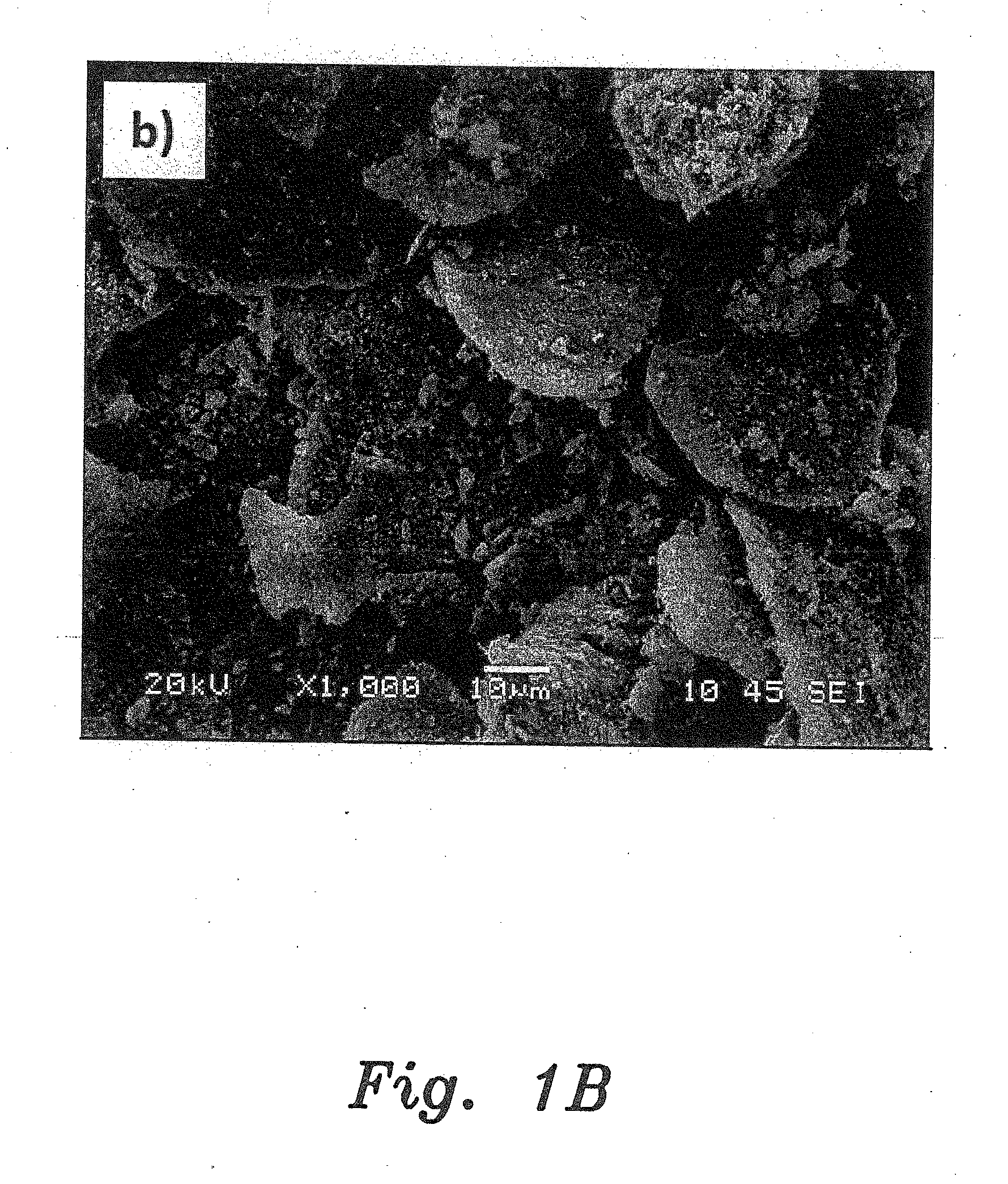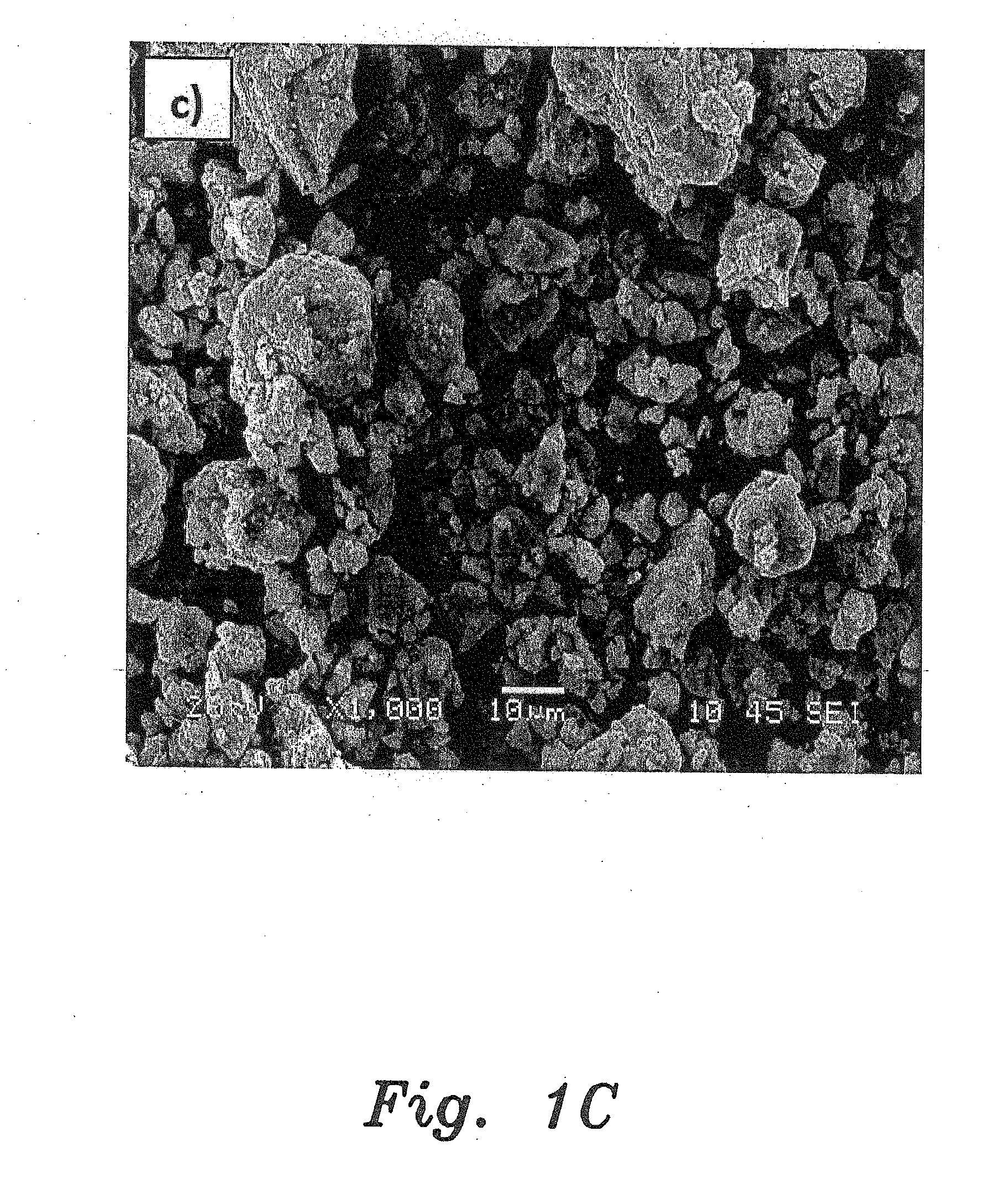High performance aluminum nanocomposites
a technology of aluminum nanocomposites and nano-composites, which is applied in the field of aluminum alloys, can solve the problems of limited capabilities of conventional al—si—mg alloys used in the automotive industry, the inability to stretch the properties beyond certain limits, and the limitation of the possibility of improving the properties of conventional processing routes
- Summary
- Abstract
- Description
- Claims
- Application Information
AI Technical Summary
Benefits of technology
Problems solved by technology
Method used
Image
Examples
Embodiment Construction
[0016]The high performance aluminum nanocomposites are formed by a combination of mechanical alloying and Spark Plasma Sintering (SPS) in order to obtain reinforced nanostructured aluminum alloys. The nanocomposites are formed from aluminum metal reinforced with silicon carbide (SiC) particulates, wherein the SiC particulates have a particle diameter between about 20 and 40 nm. The nanocomposites are prepared by mixing aluminum-based metal, e.g., Al-7Si-0.3Mg, (Al=92.7%, Si=7% and Mg=0.3%) or Al-12Si-0.3Mg, with SiC nanoparticles in a conventional mill to form a uniformly distributed powder, which is then sintered at a temperature of about 500° C. for a period up to about 20 hours to consolidate the silicon carbide particulates in order to obtain the reinforced aluminum metal-based silicon carbide nanocomposite.
[0017]As used herein the term “mechanical alloying” refers to a solid state powder processing technique involving repeated cold welding, fracturing and re-welding of powder p...
PUM
| Property | Measurement | Unit |
|---|---|---|
| diameter | aaaaa | aaaaa |
| diameter | aaaaa | aaaaa |
| crystalline size | aaaaa | aaaaa |
Abstract
Description
Claims
Application Information
 Login to View More
Login to View More - R&D
- Intellectual Property
- Life Sciences
- Materials
- Tech Scout
- Unparalleled Data Quality
- Higher Quality Content
- 60% Fewer Hallucinations
Browse by: Latest US Patents, China's latest patents, Technical Efficacy Thesaurus, Application Domain, Technology Topic, Popular Technical Reports.
© 2025 PatSnap. All rights reserved.Legal|Privacy policy|Modern Slavery Act Transparency Statement|Sitemap|About US| Contact US: help@patsnap.com



